Resident Surprised By Unwanted Guests Taking Over His Neighborhood
Have you ever heard a buzzing noise that was much louder than anything you’ve ever experienced before? That’s exactly what happened to Reddit u/jacklikecrazy92 when he woke up one day in South Shields, U.K.
Frightened, he looked outside to find something he never expected. What did he see?
Catching a Buzz: An Unexpected Discovery
Reddit u/jacklikecrazy92 had a surprise in store when he caught one of the bees swarming his neighborhood to find out exactly what kind of bee it was. Initially, he had thought these were just plain old bumble bees.

Source: jacklikecrazy92/Reddit
However, thanks to other Reddit users, he realized his mistake and found that the bees were honey bees. This discovery not only gave u/jacklikecrazy92 a newfound appreciation for the bees in his community, but also a newfound respect for the power of the Reddit community!
A Mystery Unfolds - An Enormous Swarm of Honey Bees
As he walked past his sister’s window, he couldn’t help but stop and stare. Through the glass, he saw an incredible sight – an enormous swarm of honey bees! He was completely mesmerized, and couldn’t help but wonder where they could have come from.

Source: jacklikecrazy92/Reddit
It was a mystery, and he was determined to find the answer. The swarm was so large, it almost seemed impossible. He was sure it would take a lot of effort to uncover the source of the bees. But he was determined to get to the bottom of this mystery.
Uninvited Visitors: Mysterious Bees Take Over a Town
The residents of the small town had no idea where these bees had come from, but it was clear that they had no intention of leaving anytime soon. No matter how hard the people tried, the bees kept returning to the same spot. The buzzing of the bees was like a chorus, filling the entire town with their presence.
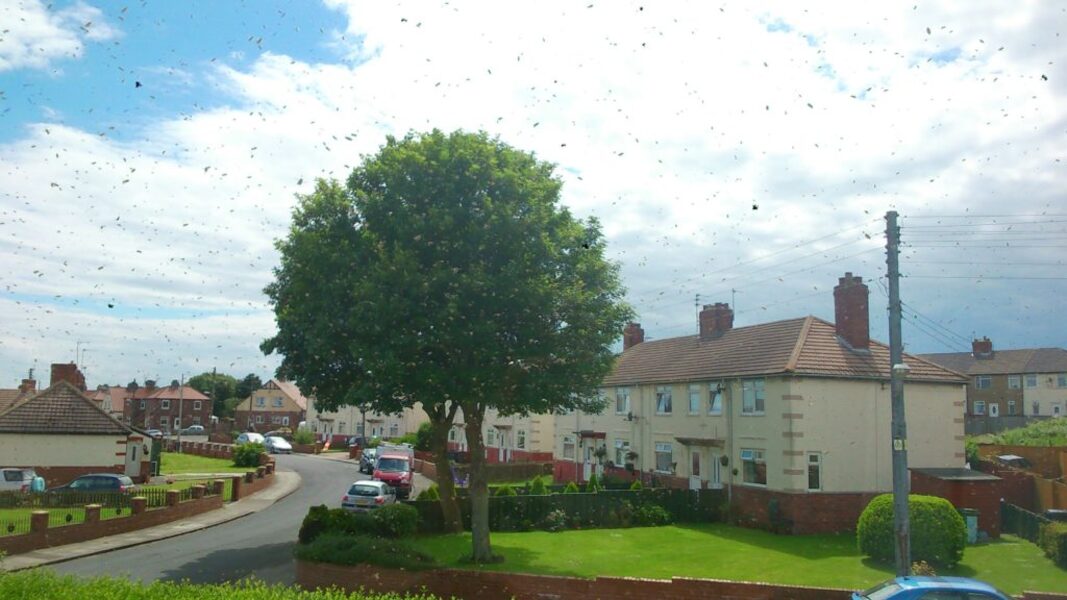
Source: jacklikecrazy92/Reddit
They flew around, pollinating flowers and gathering nectar, seemingly oblivious to the people trying to get rid of them. In the end, the townspeople had to accept that the bees had made their home there.
Save the Honey Bees - Call a Beekeeper
Do you have honey bees buzzing around your property? While some may think the solution is to call an exterminator, it is better to call a beekeeper! Honey bee numbers are declining, so we must do our part to protect them.

Source: jacklikecrazy92/Reddit
That’s exactly what went through these townspeople’s heads after a swarm of honey bees filled the streets of their hometown, with much thought to calling an exterminator. However, to do their part and help to ensure the honey bee population survives and thrives, they realized a beekeeper was the better option.
Witness the Amazing Swarming of Honeybees
Have you ever seen a group of honeybees swarming? It’s an incredible sight! When a new honey bee colony is formed, the bees swarm into a large group and fly together, creating a buzzing cloud.
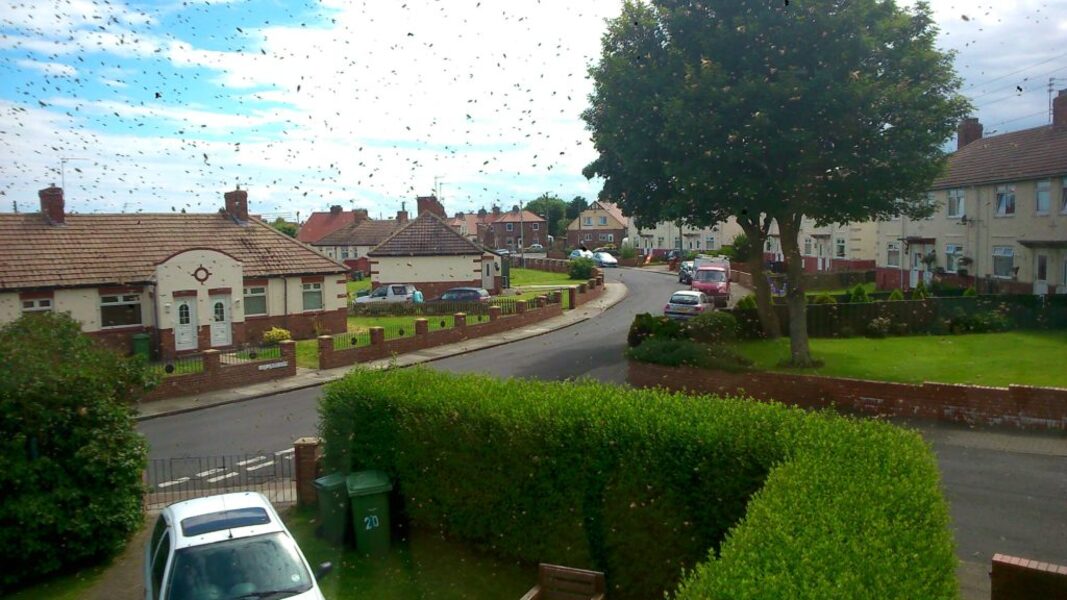
Source: Imgur
This is known as “swarming” and it is a natural way for colonies to spread and find a new one. It’s an incredible sight, witnessing the swarm of bees take over the sky, a fascinating process to watch, and a reminder of the beauty and complexity of nature.
A Swarming Situation: What Happens When the Queen Bee Leaves?
When the leader – the queen – abandons her hive, the worker bees are left with a quandary. With no ruler to lead the way, they must search for a new colony to call home. This phenomenon (swarming) is an essential part of a bee’s life cycle.
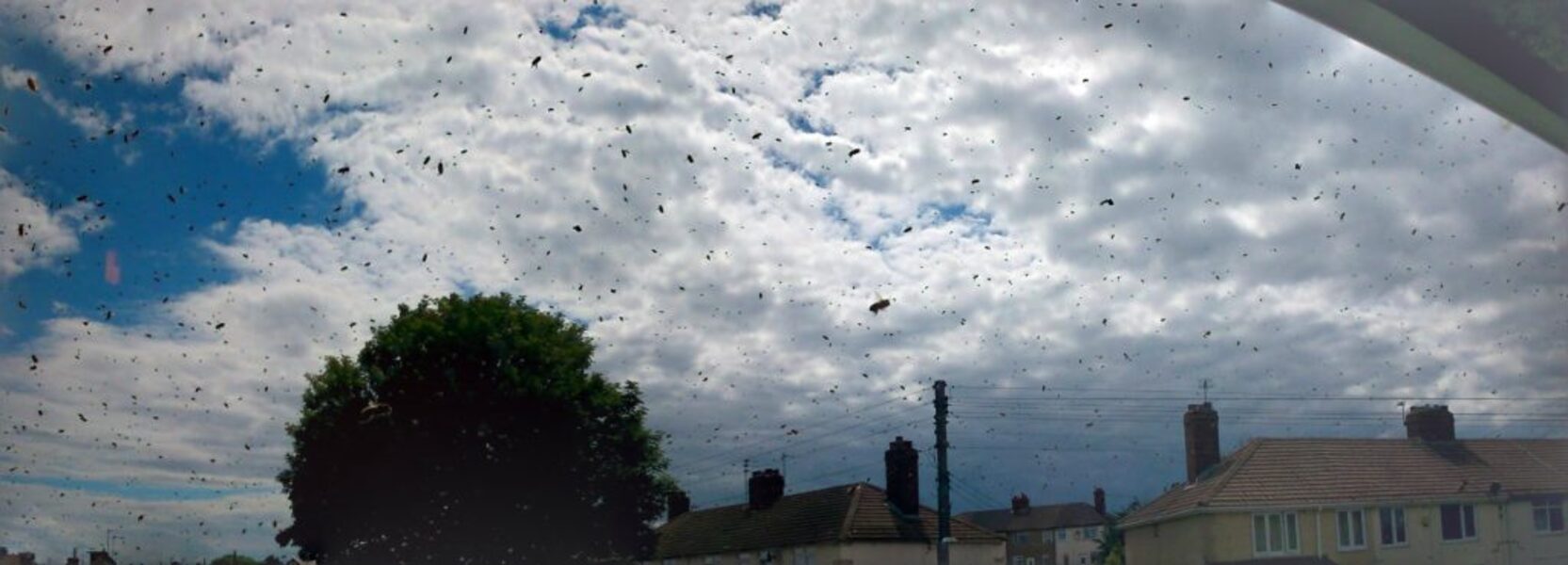
Source: jacklikecrazy92/Reddit
The workers will form a large cloud and travel until they find a suitable new home. Once they locate a suitable location, the swarm will enter and begin to build a new hive from scratch. Swarming is the bee’s way of ensuring that their species continues to thrive.
The Amazing Process of Honey Bee Reproduction
Honey bees are truly amazing creatures! Every spring, these industrious insects embark on a remarkable journey of reproduction through swarming. A swarm can contain anywhere from a few hundred to a few thousand bees.
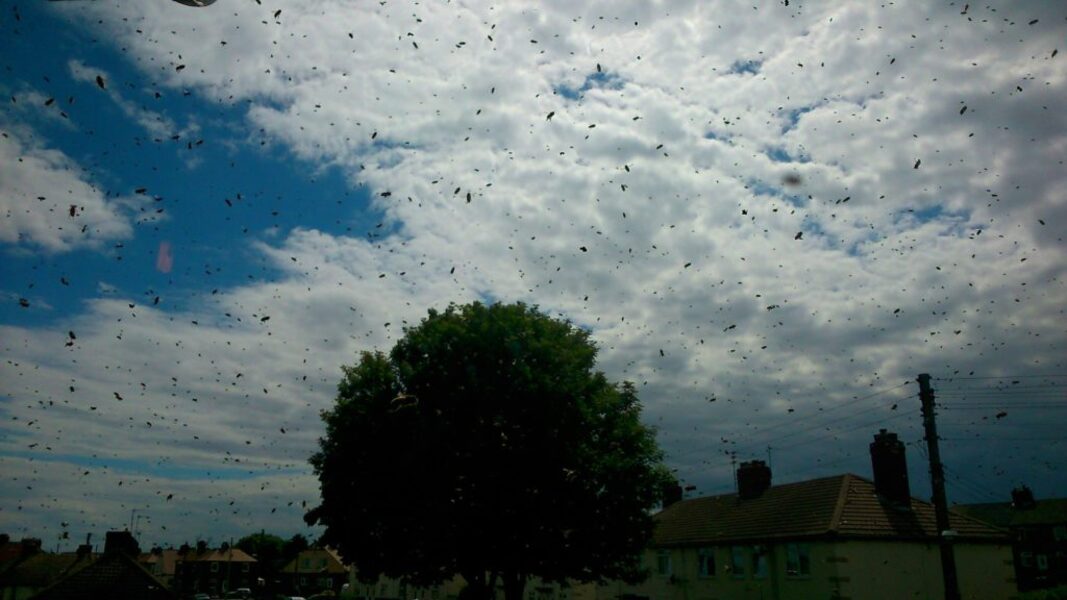
Source: jacklikecrazy92/Reddit
This process is the natural way for honey bee colonies to multiply and expand. Swarms are an incredible sight to behold as the bees fill the air with the low hum of their wings and the impressive buzz of collective energy. Truly, swarming is a fascinating natural phenomenon that is essential to the vitality of the honey bee population.
Identifying the Difference between Honey Bees and Wasps
Do you ever find bees around a hole or a mud nest? If so, it’s important to note that these are not honey bees. Instead, you have a wasp or yellow jacket problem that requires immediate attention.
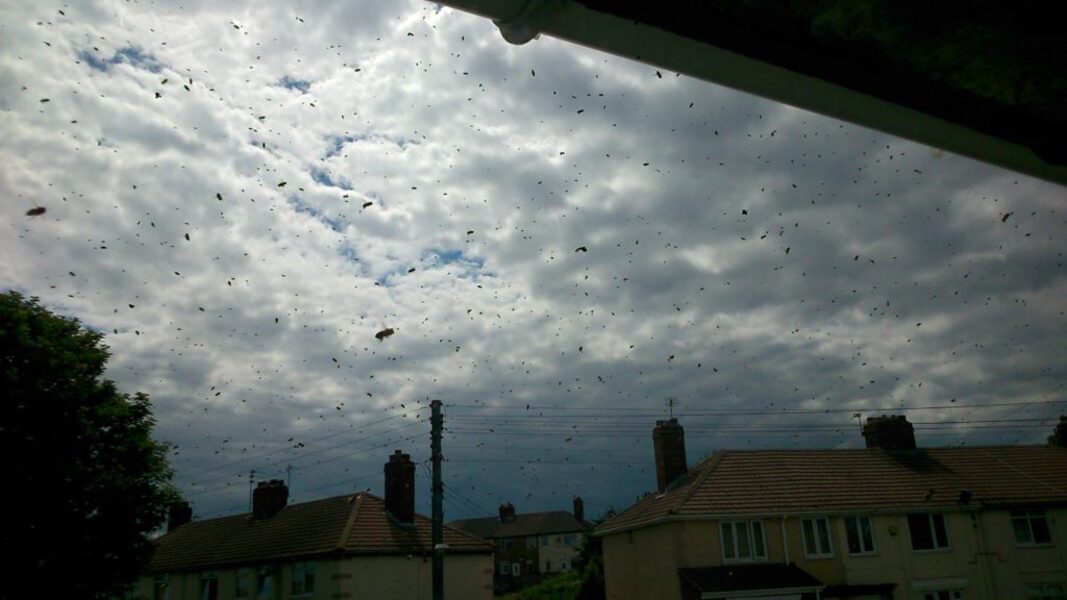
Source: jacklikecrazy92/Reddit
By understanding the differences between the two and taking preventative measures, you can effectively protect yourself and your property and bees. So, if you come across a bee problem, make sure to take the correct steps to resolve it.
Avoiding a Sting: How to Deal with Angry Bees
If you come across a swarm of angry bees, don’t worry! Though they may look intimidating, honey bees typically don’t sting unless they are very agitated. It’s likely that they are just looking for a new home and can be calmed down with the right approach.
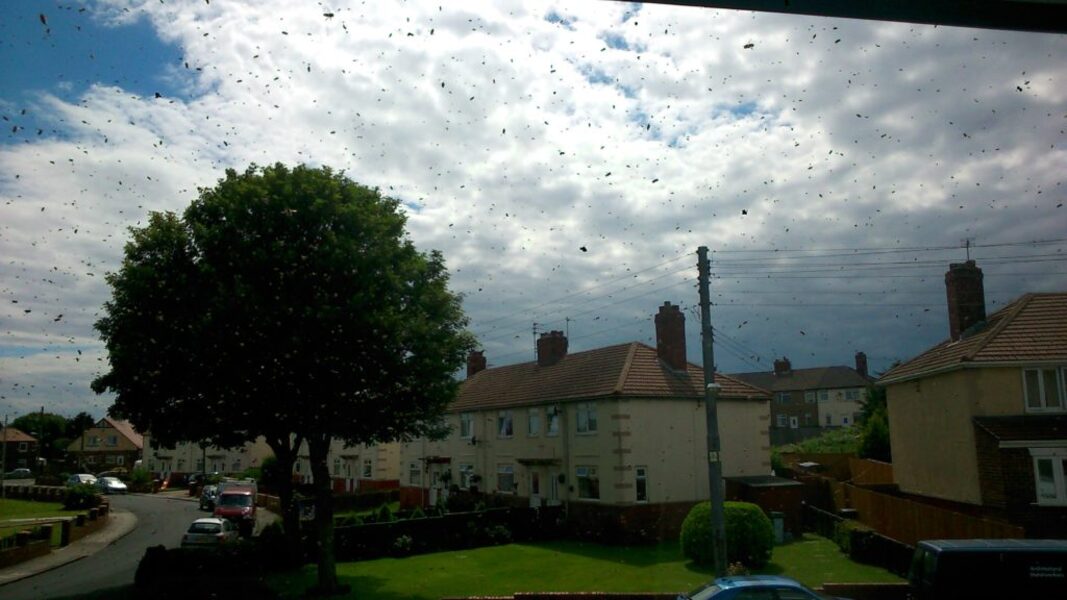
Source: jacklikecrazy92/Reddit
To avoid a sting, stay calm and avoid swatting or hitting them. If the bees are in a location you need to access, calmly move away and wait for the swarm to disperse. If they are still present, contact your local beekeeping association for assistance in safely relocating them.
Beekeepers Unite to Save Valuable Pollinators
We all know how important bees are for the environment, and that’s why when you call a beekeeper, they usually don’t charge you to remove the bees. Beekeepers recognize the value of these pollinators and understand that we rely on them far more than they do on us.
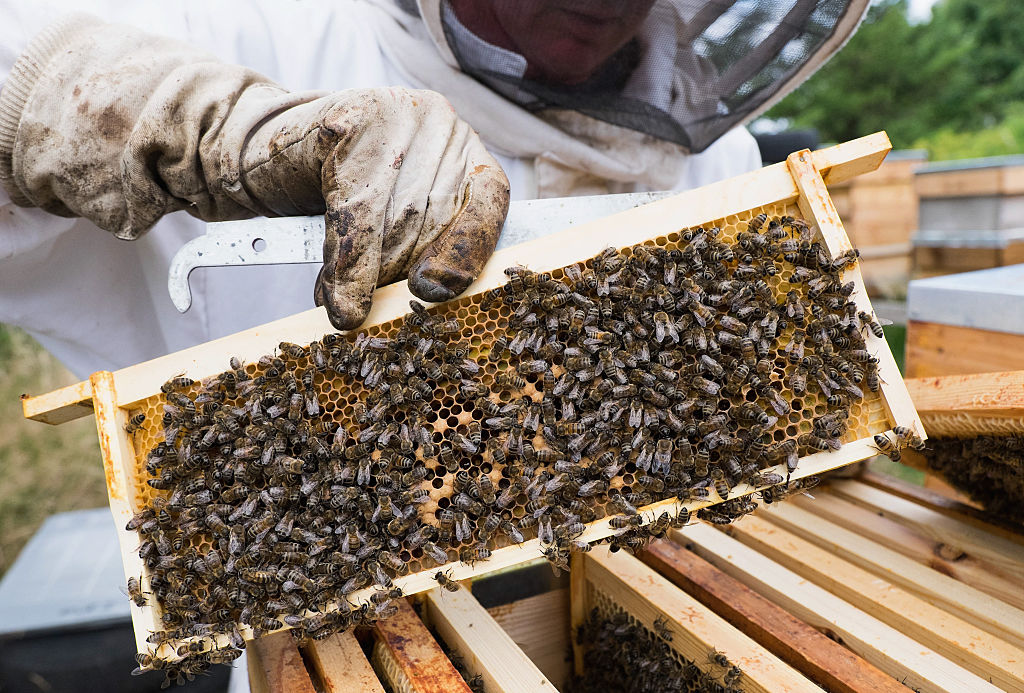
Source: Ian Forsyth/Getty Images
That’s why beekeepers are coming together to help ensure the safe removal of these valuable creatures. By working together, we can help ensure that our precious pollinators will remain a vital part of our ecosystem for years to come.
Discover the Benefits of a Bee Swarm: The Power of Diversity
Do you know that swarms of bees can actually be beneficial? It turns out, that swarming is a natural phenomenon that helps bees increase their genetic diversity. When the original queen bee departs, she takes a part of the hive with her, leaving behind a virgin queen.
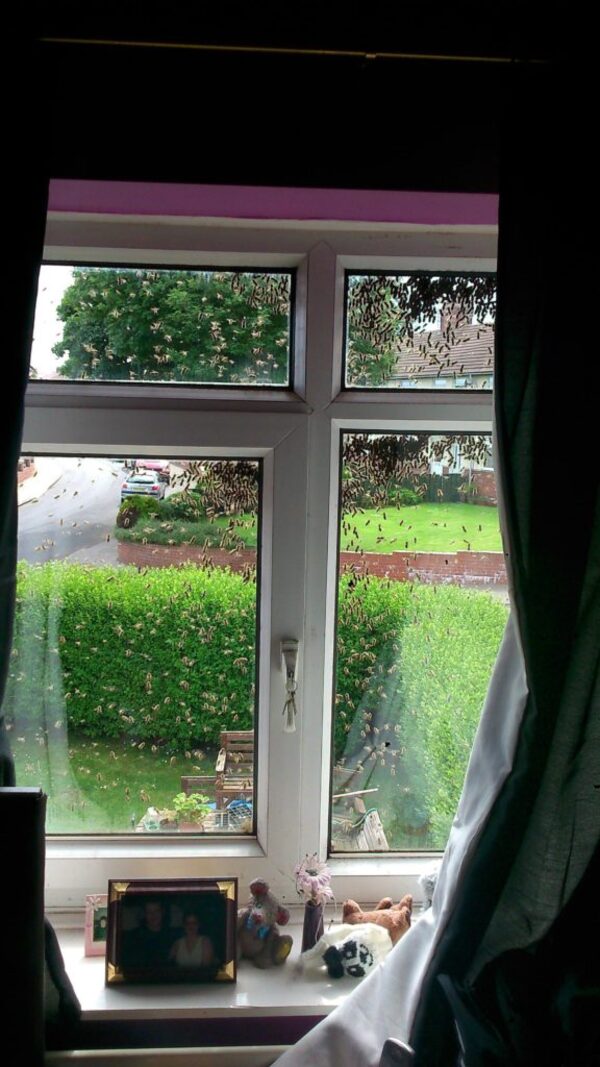
Source: jacklikecrazy92/Reddit
The new queen bee then proceeds to mate with bees from multiple other hives, ultimately creating a more diverse gene pool. By doing this, the bees can expand their genetic diversity and create a stronger colony. So the next time you encounter a swarm of bees, remember that they’re not just a nuisance – they’re actually working to help their hive thrive!
An Insight into the Non-Aggressive Nature of Swarming Honey Bees
Have you ever been puzzled by the non-aggressive nature of swarming honey bees? Well, this is due to the absence of new bees that must be defended. Instead, these swarming honey bees are focused on finding a new nesting spot for their queen.
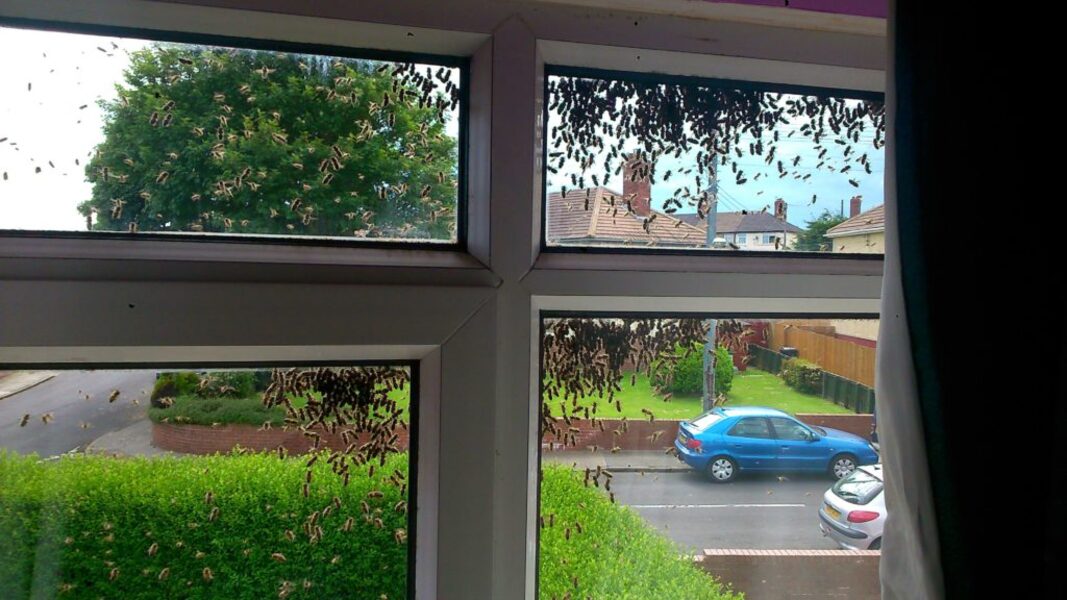
Source: jacklikecrazy92/Reddit
This is an indication of the remarkable organization and cooperation of honey bees that go beyond the single bee colony. It also shows the instinctive nature of the honey bees to ensure their survival as a colony. Hence, it is no surprise that honey bees form one of the most successful social species in the world.
The Three Types of Honey Bees: The Queen Bee
Take a closer look into the fascinating world of honey bees and their three types: the Queen Bee, the Worker Bee, and the Drone Bee. The Queen Bee is the leader of the hive and has the important job of laying eggs – approximately 1,500 per day!
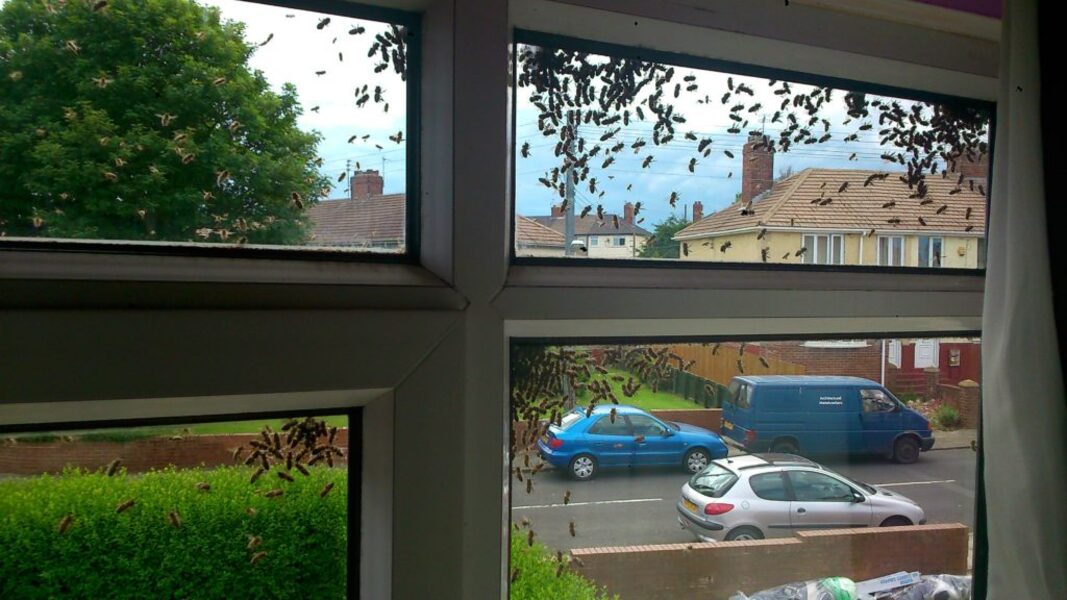
Source: jacklikecrazy92/Reddit
This is vital to the unity of the colony, as she is the only bee with fully developed ovaries. In addition to laying eggs, the Queen Bee produces chemical scents to help regulate the colony.
The Three Types of Honey Bees: The Hardworking Female Bees
The worker bees of a hive are incredibly hardworking and devoted to the well-being of their home. They are all females and extremely resilient insects that take on the responsibility of caring for the entire hive, making sure that everyone is safe and well-fed.
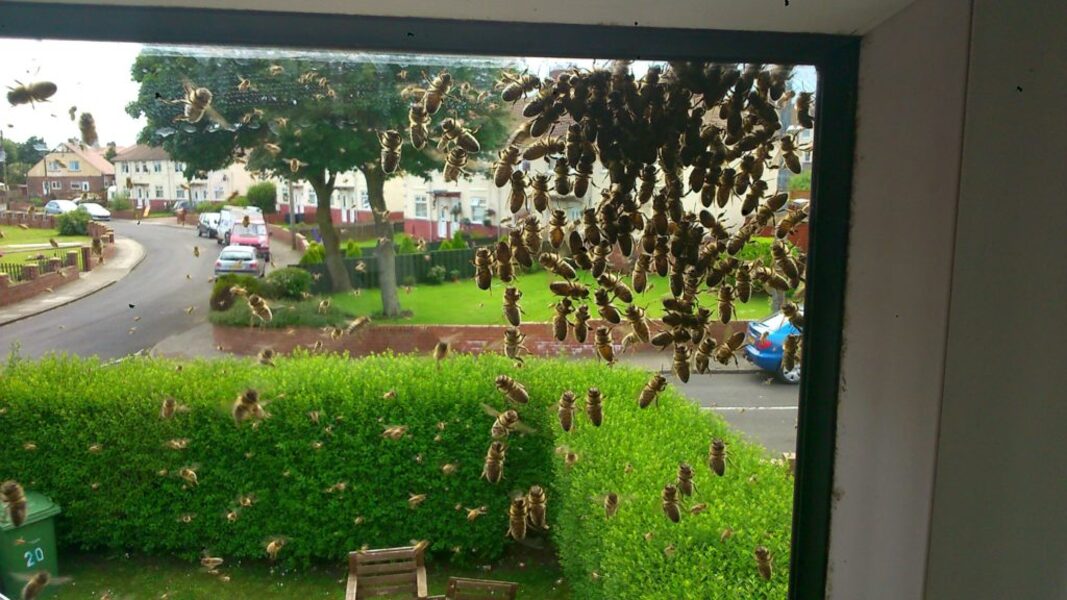
Source: jacklikecrazy92/Reddit
They forage for nectar and pollen, build and maintain the hive, and defend the colony from threats. In addition, worker bees have a life span of only a few weeks and work until exhaustion! Without their tireless efforts, the hive would not be able to survive and thrive.
The Three Types of Honey Bees: The Drone Bees
Drone bees are a unique species of bee, distinct from their female counterparts. As males, they are responsible for finding a queen bee to mate with – and they don’t have a stinger. They are hardworking and loyal, devoted to their task of finding their queen and ensuring the survival of their species.
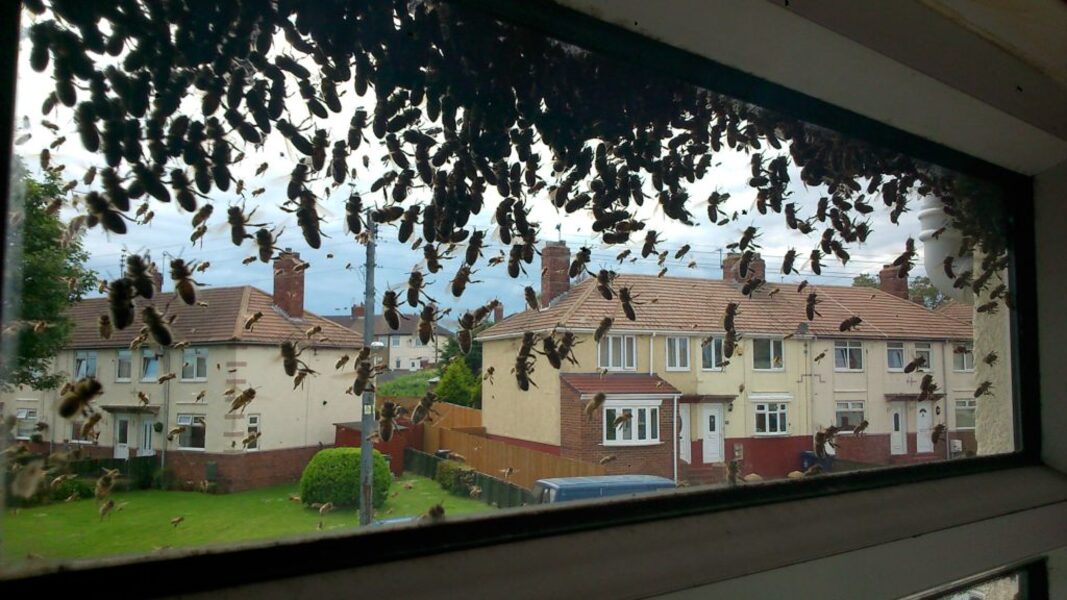
Source: jacklikecrazy92/Reddit
The drone bee’s life revolves around the search for a mate. After the queen bee has mated, the drone bees usually die. This makes the drone bee one of nature’s most loyal suitors, sacrificing its own life for the greater good of the bee population.
